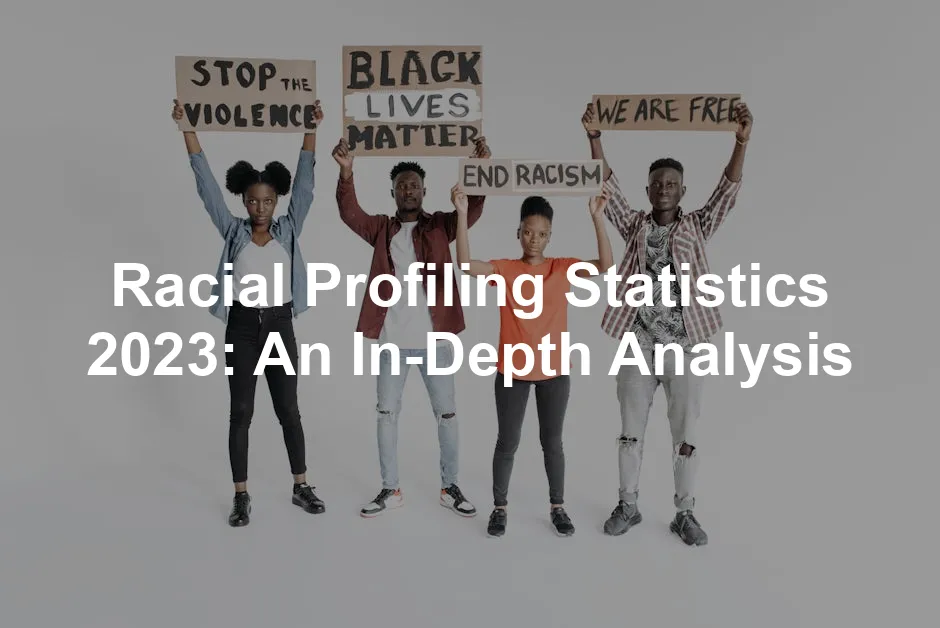Introduction
Racial profiling is a practice where individuals are targeted for suspicion based on their race or ethnicity. This troubling behavior often occurs in law enforcement settings, leading to significant societal implications. Imagine getting pulled over simply because of your appearance. Frustrating, right? It’s not just a personal annoyance; it reflects broader systemic issues that affect entire communities.
In 2023, understanding racial profiling statistics is more crucial than ever. Recent movements for racial justice have sparked conversations about policing practices, community relations, and legislative reforms. With ongoing debates about police accountability, the numbers tell a vital story. They reveal trends that can help us comprehend the current landscape of racial profiling and its impact.
So, why should we care about the stats for this year? Well, for starters, they provide insight into how policies are shaping law enforcement practices. Recent changes in legislation, like the new requirements for reporting racial profiling incidents, highlight the importance of transparency. Plus, with increased scrutiny on police actions, the statistics shed light on whether these changes are making a difference.
In this article, expect a thorough breakdown of the latest statistics, emerging trends, and the implications of racial profiling in 2023. We’ll dive into national and state-level data, explore the effects of legislation, and investigate how these numbers reflect broader societal attitudes. By the end, you’ll have a clearer understanding of how racial profiling continues to affect lives and communities today.
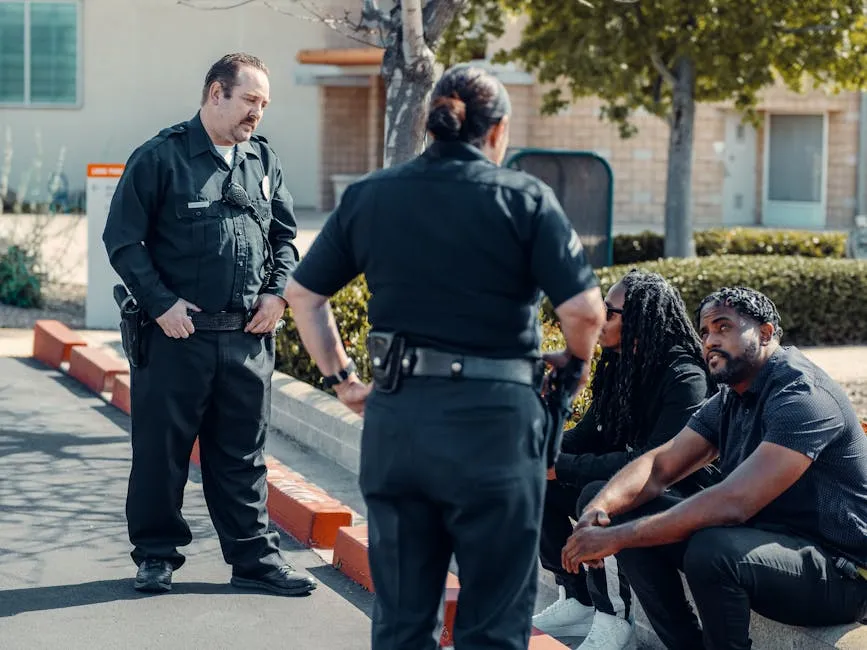
Understanding Racial Profiling
Racial profiling, simply put, is the act of suspecting or targeting a person based on their race or ethnicity. This practice has a long history, with roots deeply embedded in societal biases and stereotypes. It began gaining attention during the civil rights movement, highlighting the unjust treatment faced by minority groups. Over time, racial profiling has evolved, shifting from overt discrimination to more subtle practices that can still have devastating impacts.
The legal framework around racial profiling is complex. In the United States, it conflicts with constitutional protections against unreasonable searches and seizures. Despite laws and regulations intended to combat this issue, enforcement remains inconsistent. For instance, the Fourth Amendment guarantees every individual protection from arbitrary police actions. Yet, the reality often tells a different story, as many individuals, particularly from marginalized communities, find themselves subject to discriminatory practices.
Law enforcement plays a significant role in perpetuating or combating racial profiling. In many cases, profiling manifests during traffic stops, searches, and arrests. Officers may rely on stereotypes rather than objective evidence, leading to strained relationships between police and communities. This mistrust can create a vicious cycle: communities become less willing to cooperate with law enforcement, which can hinder effective policing and public safety.
Understanding racial profiling is essential for recognizing its implications. The statistics from 2023 reflect not only the reality of policing practices but also the experiences of individuals who face this injustice daily. In the following sections, we’ll delve deeper into the statistics and what they mean for society today. Let’s start unpacking the numbers and see how they shape our understanding of racial profiling in 2023.
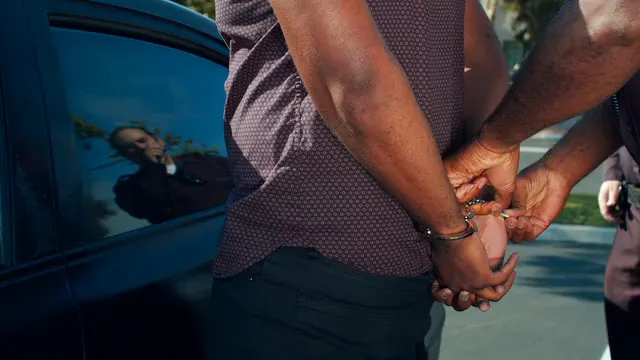
Key Racial Profiling Statistics for 2023
Overview of National Trends
Racial profiling remains a pressing issue in America, and the statistics for 2023 paint a vivid picture of its prevalence. According to the ACLU, a staggering 41% of Black Americans report being stopped or detained by police due to their race. This figure highlights the ongoing struggle for racial justice and serves as a reminder of the biases ingrained in law enforcement practices.
When we take a broader look at national statistics, the data reveals significant disparities among different racial groups. For instance, the stop-and-search rates in England and Wales show that Black individuals are significantly more likely to be stopped compared to their white counterparts. Specifically, Black individuals faced a stop-and-search rate of 24.5 per 1,000 people, while for white individuals, the rate was just 5.9 per 1,000. These figures clearly indicate that racial profiling is not just an isolated event but a systemic issue affecting many communities.
Comparing the data from 2023 to previous years also reveals some trends. In England and Wales, the overall stop-and-search rate decreased from 11.7 per 1,000 in 2020/21 to 8.9 per 1,000 in the latest report. While this reduction is encouraging, the disproportionate impact on racial minorities persists. The ACLU reports that 30% of Black men specifically feel the brunt of this profiling, demonstrating that the fight for equality is far from over.
Another noteworthy aspect is the geographic disparity in racial profiling. For example, the Metropolitan Police area in London accounted for approximately 33% of all stop-and-search incidents. This concentration suggests that certain urban areas may face heightened scrutiny and policing, raising concerns about community relations and trust in law enforcement.
As we discuss the broader implications of racial profiling, consider enhancing your understanding with “The New Jim Crow: Mass Incarceration in the Age of Colorblindness” by Michelle Alexander. This book dives deep into the systemic issues surrounding race and incarceration, providing context that can help you understand the statistics we’re discussing.
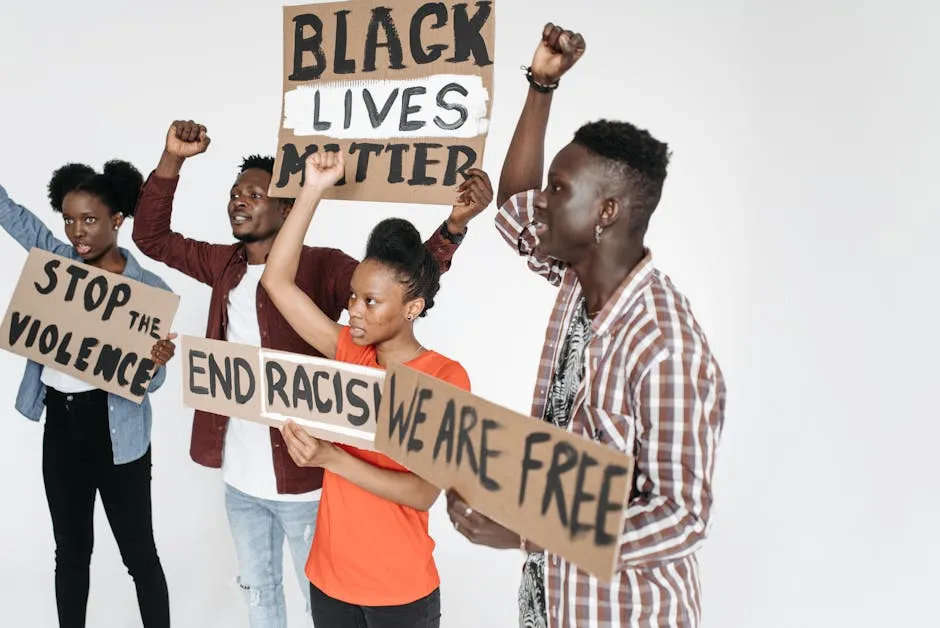
State-Level Insights
Zooming in on state-level data, Texas and California provide illuminating insights into racial profiling trends. Texas, known for its robust policing presence, has mandated annual reporting of racial profiling incidents since 2001. The latest reports reveal that certain law enforcement agencies have filed significant racial profiling statistics, reflecting ongoing concerns.
In Texas, the 2023 racial profiling report highlighted that agencies are required to analyze their traffic stop data based on the gender and ethnic makeup of their communities. This initiative aims to enhance accountability and transparency. However, the effectiveness of these measures remains a topic of debate. Critics argue that without proper analysis and implementation, such reports may be little more than a box-ticking exercise.
California’s Racial and Identity Profiling Advisory (RIPA) Board has also come under scrutiny. A comparative analysis of the 2022 and 2023 reports indicated that the methodology used by the board was flawed, potentially misrepresenting racial profiling incidents. This inconsistency raises important questions about the reliability of the data and its implications for policy-making.
For those looking to understand the personal stories behind these statistics, I highly recommend checking out “Just Mercy: A Story of Justice and Redemption” by Bryan Stevenson. This powerful memoir sheds light on the injustices faced by individuals caught in the web of a flawed justice system.
In terms of notable case studies, recent incidents reported by various police departments underscore the urgent need for reform. In one high-profile case, a department faced backlash after multiple incidents of racial profiling were brought to light, leading to public outcry and calls for accountability. These incidents serve as reminders of the real-world consequences of racial profiling and the need for systemic change.

By examining these national and state-level statistics, it’s evident that racial profiling continues to permeate law enforcement practices. The statistics not only reveal the extent of the problem but also underscore the importance of ongoing advocacy and reform efforts. As we progress through 2023, it’s crucial to remain vigilant and advocate for changes that promote fairness and justice for all communities.
Stop and Search Data (England and Wales)
- Statistical Overview: In 2023, the stop and search report revealed some eye-opening numbers. There were 529,474 stop and searches conducted in England and Wales. That’s about 8.9 per 1,000 people, a decline from previous years. But don’t be fooled; this reduction comes with some unsettling truths. For Black individuals, the stop and search rate shot up to 24.5 per 1,000. In stark contrast, white individuals faced a mere 5.9 per 1,000. If that doesn’t raise eyebrows, what will? The data also showed that 33% of all stop and searches happened in London’s Metropolitan Police area, highlighting a concentrated policing effort in urban regions.
- Ethnic Disparities: The ethnic disparities are glaring. Black individuals experienced the highest rates, while white individuals enjoyed a significantly lower rate. For other groups, the statistics tell a similar story of disproportionate targeting. For instance, Asian individuals faced a stop-and-search rate of 8.5 per 1,000. The ‘black other’ category is a particular standout with a staggering rate of 92 per 1,000. This disparity raises serious questions about policing practices and their impact on community trust.

Racial Profiling Reports in the U.S.
- ACLU Findings: The ACLU’s findings offer a sobering glimpse into the experiences of Black Americans. About 41% report being stopped or detained solely due to their race. It doesn’t stop there; 30% of Black men have faced police violence. These statistics aren’t just numbers; they represent real-life experiences that continue to haunt communities across the nation. The ACLU emphasizes that racial profiling is not only illegal but also damages the credibility of law enforcement, creating a divide between police and communities.
- State-Specific Reports: In Texas, the state mandates annual racial profiling reports. Agencies must analyze their traffic stop data, comparing it to the demographics of their communities. However, the effectiveness of these reports is a topic of debate. Some argue that without proper enforcement and analysis, they become mere formalities. Meanwhile, in California, a critical analysis of the RIPA Board’s 2023 report pointed out serious methodological flaws, resulting in misleading statistics. This raises questions about the reliability of data and its role in shaping policy.

Longitudinal Trends
- Changes Over Time: Looking at the evolution of racial profiling statistics from 2020 to 2023 reveals a mixed bag. Overall, the stop-and-search rate in England and Wales decreased from 11.7 to 8.9 per 1,000 people. Yet, the rate for Black individuals only declined from 40.7 to 24.5, indicating persistent disparities. In the U.S., similar trends persist, with racial profiling remaining a significant issue despite public outcry and calls for reform.
- Impact of Legislation: Changes in legislation have attempted to address these concerns. In Texas, the requirement for agencies to report racial profiling statistics aims to enhance accountability. However, critics argue that without consequences for non-compliance, these laws may not lead to meaningful change. In California, the flawed reporting methodology by the RIPA Board suggests that legislative efforts need better execution to effect real improvements in policing practices.

Factors Contributing to Racial Profiling
Societal Influences
Media Representation
Media plays a significant role in shaping societal views on race. Think about it: how often do you see a news story that features a person of color as the villain? This portrayal can lead to stereotypes that influence public perception. When crime stories dominate the headlines, they often focus on racialized narratives. As a result, people start associating certain races with criminality. This skewed representation fosters biases that seep into everyday life, including law enforcement practices.
In 2023, the conversation around media representation is more important than ever. With social media amplifying voices, there’s a growing push for fair representation. However, the damage done by years of biased portrayals doesn’t disappear overnight. Even one viral tweet can reinforce negative stereotypes, leaving police officers, who are influenced by these narratives, to make assumptions based on race rather than facts.

Public Perception
Societal attitudes towards race influence policing practices significantly. When communities harbor negative perceptions about specific racial groups, these biases can seep into police work. Officers might unconsciously act on these biases during stops or searches. A report from the ACLU states that 41% of Black Americans have been stopped by police due to their race. This statistic isn’t just a number; it reflects a public perception problem that impacts real lives.
Moreover, public opinion can drive law enforcement policies. If a community believes that crime is rampant within a specific demographic, they might demand that police increase their presence in those areas. This demand can lead to over-policing of specific communities, creating a self-fulfilling prophecy. The more police focus on certain neighborhoods, the more likely they are to encounter criminal activity, thus reinforcing the stereotype that these areas are crime hotspots.

Law Enforcement Policies
Training and Protocols
Law enforcement agencies are increasingly aware of the need to combat racial profiling. Many have implemented training programs to address biases and promote fair policing practices. These programs focus on understanding implicit biases and encourage officers to consider the facts rather than assumptions based on race.
However, the effectiveness of these measures varies widely. While some departments have made strides, others lag behind. For instance, training might be thorough, but if officers return to a culture that tolerates profiling, the training becomes ineffective. In 2023, many agencies are still in the early stages of reforming their practices. The challenge lies in making sure that training translates into actual behavior on the streets. Without consistent reinforcement, well-intentioned training can wear off like last week’s news.
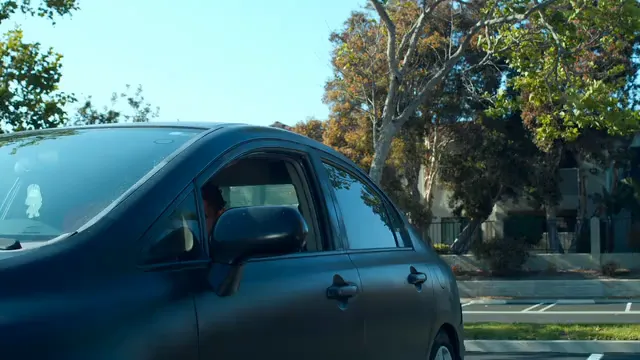
Accountability Mechanisms
To hold law enforcement accountable for racial profiling, various mechanisms are in place. Many departments now have oversight bodies that review police actions. These bodies can analyze traffic stop data and investigate complaints. Transparency is key; public reporting of racial profiling incidents can empower communities to demand change.
In Texas, for example, law enforcement agencies are required to submit annual racial profiling reports to the Texas Commission on Law Enforcement (TCOLE). This requirement aims to enhance transparency and accountability. However, the effectiveness of these mechanisms often depends on community engagement. If citizens feel disconnected from the reporting process, accountability can falter.
Furthermore, the push for body cameras has gained momentum, as video evidence can provide an objective account of police encounters. But, as we know, technology is not a silver bullet. The existence of cameras doesn’t guarantee that officers will alter their behavior. It’s crucial that these tools are coupled with a strong commitment to change within law enforcement agencies.

Racial profiling is influenced by a complex mix of societal influences and law enforcement policies. As we continue to address these challenges, it’s clear that education, accountability, and community engagement are essential to creating lasting change. By understanding these factors, we can begin to dismantle the harmful patterns of racial profiling that persist in our society.

Community Impact
Trust in Law Enforcement
Racial profiling shatters community trust in police. Imagine living in a neighborhood where police are seen as foes, not protectors. It’s a recipe for disaster. When individuals feel targeted based on race, they’re less likely to report crimes or cooperate during investigations. This mistrust damages relationships and hinders effective policing. Communities thrive on cooperation with law enforcement. When that bond weakens, crime can rise. It’s a cycle that perpetuates fear and division, making everyone less safe.

Psychological Effects
The mental health implications of racial profiling are staggering. Constant anxiety about being targeted can lead to stress, depression, and a host of other issues. Imagine being unable to walk down the street without worrying about police scrutiny. This stress doesn’t just affect individuals; it seeps into families and communities. Children raised in these environments may internalize these fears, perpetuating a cycle of trauma. Research shows that marginalized groups often experience higher rates of PTSD, anxiety, and depression due to these societal pressures.

Legal and Political Ramifications
Litigation and Advocacy
In recent years, several key cases have spotlighted the need for reform. For instance, the ACLU has taken significant steps to challenge racial profiling. Their initiatives focus on both litigation and advocacy, pushing for robust anti-profiling legislation. High-profile cases have drawn attention to how racial profiling harms communities and erodes trust in law enforcement. Advocacy groups work tirelessly to ensure that victims receive justice and that law enforcement practices are scrutinized. These efforts are crucial for holding agencies accountable and fostering meaningful change.
Policy Recommendations
Proposed changes to legislation aim to reduce racial profiling significantly. Experts recommend implementing stricter data collection requirements for police departments. Transparency is key; communities deserve to know how policing practices affect them. Additionally, enhanced training programs emphasizing community engagement and bias recognition can help shift mindsets. Recommendations also include establishing independent oversight bodies to review complaints. By addressing these issues, we can work toward a more equitable justice system that serves all communities fairly.
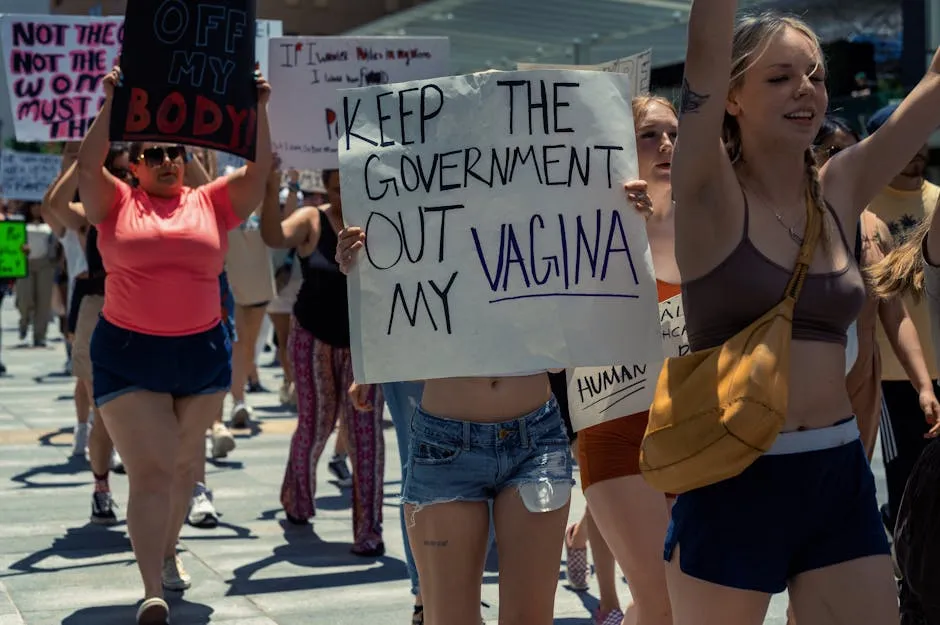
Conclusion
Racial profiling is a pervasive issue that affects many communities across the United States. The statistics from 2023 reveal alarming trends that demand our attention. A staggering 41% of Black Americans report being stopped or detained by police due to their race. This statistic doesn’t just reflect isolated incidents; it showcases a systemic problem that continues to perpetuate distrust and division. The impact of racial profiling extends beyond law enforcement. It seeps into the fabric of society, affecting mental health, community relations, and overall safety.
As we consider the importance of racial profiling statistics 2023, it becomes clear that the implications are profound. Communities targeted by racial profiling often face trauma and psychological distress. Children grow up in an environment where they fear those meant to protect them. This fear damages the bonds necessary for effective community policing. When individuals feel alienated, they are less likely to cooperate with law enforcement, creating a vicious cycle.
As we look forward, it’s essential to advocate for policies that address these injustices. Engaging with local communities and pushing for legislative reforms can help combat racial profiling. We must hold law enforcement accountable and demand transparency in their practices. This is not just about statistics; it’s about human lives and dignity.
For a deeper understanding of the historical context of these issues, consider reading “Between the World and Me” by Ta-Nehisi Coates. This poignant letter conveys the struggle against systemic racism and can provide valuable insights into the emotional and societal impacts of racial profiling.
Continued monitoring and research into racial profiling are crucial. Understanding the nuances of this issue will aid in dismantling systemic biases. The fight for justice and equality is ongoing, and every voice matters. Let’s work together to create a future where trust is restored, and all communities feel safe and valued.
FAQs
What is racial profiling?
Racial profiling is the practice of targeting individuals based on their race or ethnicity rather than objective evidence. It often occurs in law enforcement settings and can lead to unjust treatment.
How can I report an incident of racial profiling?
If you experience racial profiling, document the incident with as much detail as possible. Report it to local advocacy groups or directly to law enforcement agencies. Many organizations, like the ACLU, offer resources for reporting these incidents.
What are the current laws against racial profiling?
Laws against racial profiling vary by state. Many jurisdictions have specific policies prohibiting the practice, but enforcement can be inconsistent. It’s important to research local laws and stay informed about recent legislative changes.
How can communities combat racial profiling?
Communities can combat racial profiling by fostering open dialogues with law enforcement, advocating for policy changes, and encouraging community engagement. Education and awareness initiatives can also help shift perceptions and promote understanding.
Why are statistics on racial profiling important?
Statistics on racial profiling provide essential insights into patterns of discrimination and help identify areas needing reform. They serve as a basis for advocacy efforts and policy changes, ultimately aiming to create a fairer justice system.
Please let us know what you think about our content by leaving a comment down below!
Thank you for reading till here 🙂
All images from Pexels

